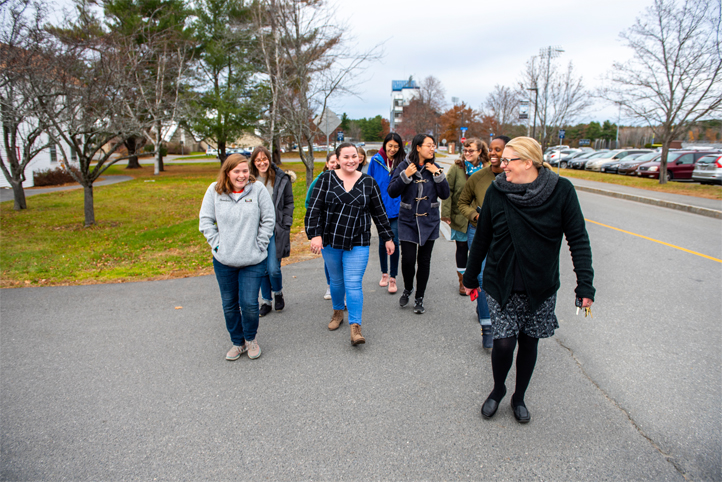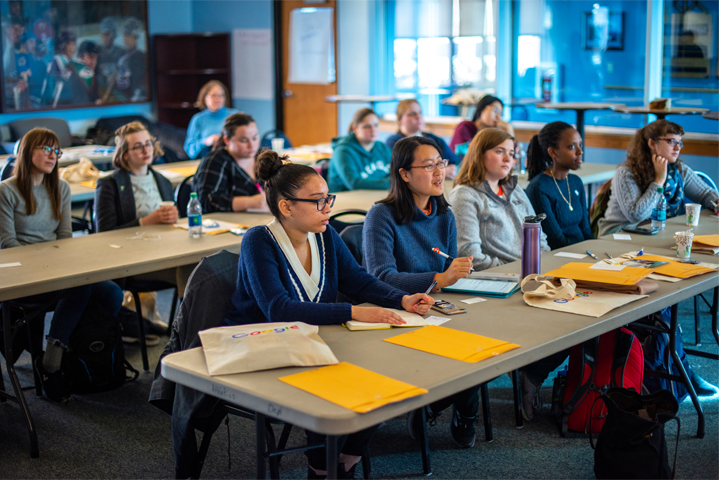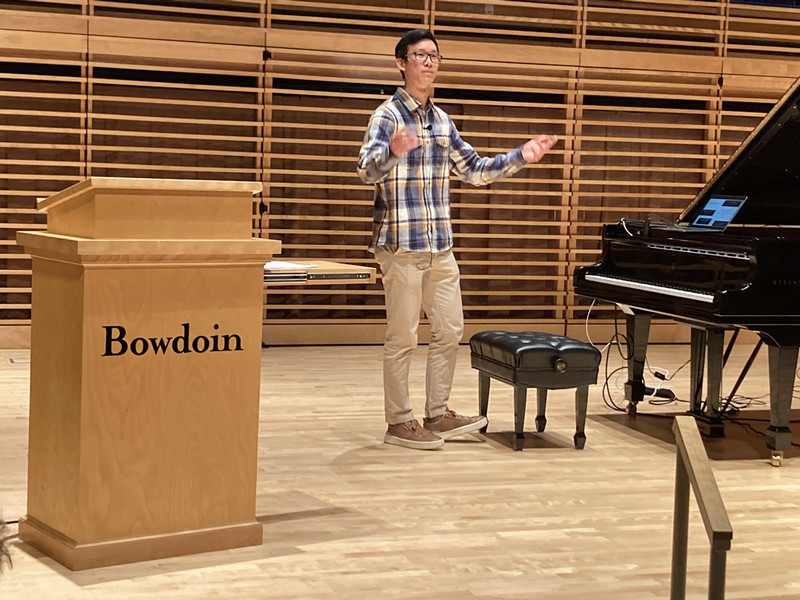Expanding Access to STEM
By Tom Porter
Beyond the visual
A lot of scientific and technical subjects are very dependent on visual material to get their point across, says Doore, which makes it much harder for students who are blind or visually impaired (BVI) to move through these disciplines to post-secondary levels. “If you think about it, so much STEM material is visual—charts, maps, diagrams, graphs, etc.–which is a real problem for BVI students to advance in these disciplines.”
In August, Doore and her collaborators, Nicholas Giudice and Justin Dimmel, at the University of Maine, Orono, learned they had won a three-year cyberlearning grant from the National Science Foundation for approximately $750,000. The grant will develop the work Doore has been doing with UMaine’s Virtual Environment and Multimodal Interaction Laboratory (VEMI Lab). “The idea with this project is to develop multimodal systems for communicating graphical learning materials,” says Doore. “An example of a multimodal interface is when a smartphone user can feel a vibration in response to touching a particular part of the graphic. At the same time, a spatialized audio signal might come from the left or the right channel, depending on the type of information being communicated.”
Another modality being explored, she explains, is the use of natural language descriptions of spatial information in the graphical representations, which is one of the focuses of Doore’s research. “This means developing a program that can deliver descriptions depicting the spatial configuration of visual information in a way that’s precise and easy to follow. The language we use to describe navigation in outdoor space is very standardized and was developed over a long period of time after a lot of user testing. Think of the GPS in your car and the clear, short sentences it uses about where you need to go. We need the same sort of standardization for describing maps, charts, and graphs for people who do not have the use of vision to interpret graphical information.”
Testing how individual modalities contribute to the overall learning of graphical information will take place in the lab first, says Doore, but the grant will also enable further development and testing of this multimodal system to make it available for remote testing on a wide scale. “On a practical level we have to start delivering this information in a remote way and cheaply. A lot of the testing we’ve done previously has taken place in a lab both with participants who are sighted and those with vision impairments.” This new funding, she explains, will mean these remote accessibility technologies can enable testing among a much wider population of BVI participants and this will benefit researchers, who receive valuable user input, and the participants, who will be compensated for their expert insights on the technology development.
Doore hopes to involve students in the project over the 2019 summer break. “The work could be anything from helping to develop the platform, to testing. I’m planning to follow the lead of the VEMI lab, where students get experience in both development and research work, as opposed to just concentrating on one of the skill sets. As a developer, you should help to develop the research behind the project, and as a researcher it’s crucial to understand the technical challenges in the development process. It is important for students to understand the whole concept from beginning to end.”

Computer science research needs more women!
In addition to the NSF award, Doore has also been named as co-principal investigator on a highly competitive grant from Google—one of twelve issued nationwide. In collaboration with colleagues Penny Rheingans (University of Maine), and Anne Applin (Southern Maine Community College), Doore helped to launch a pilot project to look at ways for Maine colleges to increase female participation in computer science research.
“The number of women pursuing PhDs in computer science is phenomenally low, and part of that is sometimes due to a feeling of ‘imposter syndrome.’ CS research is often a very male-dominated world.” Doore explains, “Men tend to have different ways of communicating and interacting in research environments, which can be intimidating for some undergraduate women, making them feel they don’t belong.’”
The aim is to encourage forty undergraduate women in Maine to consider enrollment in postgraduate computing-related research pathways. “We want to create a state-wide mentoring network of women CS students, faculty, and industry leaders. Women in the CS field at all levels are not really connected at the moment in Maine, but we hope to help change that.” says Doore.
Some of the Google grant will be used to foster collaboration between female students and faculty on research projects at different institutions throughout the state. The money is also funding two workshops to help establish these mentoring networks. The first workshop occurred on November 9-10 at UMaine in Orono, says Doore, and it was attended by five Bowdoin students. The second workshop will be in April 2019.



